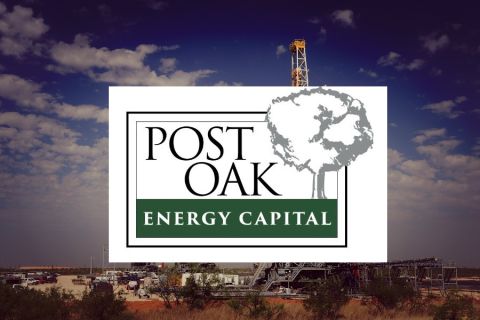Last October, our cover story featured the surge in natural gas prices and drilling activity in western Canada, and the mergers and acquisitions under way to take advantage of the situation. The market forces that propelled that action have only gathered more steam in 2000. At press time, the gas futures strip on the New York Mercantile Exchange rose to its highest level since trading began 10 years ago. Spot prices at the AECO-C hub on the Alberta border topped C$6 per thousand cubic feet. Canadian gas storage was below year-ago levels by about 10%. Heady times indeed. And what's more, the Alliance Pipeline is to go into service this month, enabling producers to ship more gas to Chicago. The new line will add capacity of 1.3 billion cubic feet a day to Canada's pipeline grid, although it won't start moving that much gas initially. Given that they are receiving unprecedented netbacks at the wellhead, Canadian producers are going all out. Through July, almost 11,000 licenses to drill had been issued in western Canada, up 78% from the first seven months of 1999. Gas completions were up 35%, according to the Canadian Energy Research Institute's monthly "Natural Gas Market Watch" report. The Petroleum Services Association of Canada, which updates its drilling forecast quarterly, now thinks operators will drill 9,185 gas wells this year, which would be close to the record set in 1997. As of September 8, they had already drilled 4,900. In contrast, companies completed roughly 6,300 gas wells in 1999. "If prices stay at the level they are now, 2001 could be even bigger," says Roger Soucy, PSAC president, although he questions infrastructure. "The concern is not so much the hardware, it's the experienced rig crews that will be a problem. This winter, I think we're going to be scrambling. The pool of young people who have been exposed to outdoor labor and are willing to do it is shrinking [as the farm population dwindles and more youths are raised in urban areas]." Depletion remains a challenge in Canada as in the U.S. Analysts say first-year decline rates for gas wells in Alberta are averaging nearly 40%, creating a powerful need to drill more wells just to keep production stable. No wonder observers warn there may be a gas shortfall this winter. "The extent of the supply shortfall relative to available pipeline capacity is becoming abundantly clear," says a recent report from Martin Molyneaux and Martin King of FirstEnergy Capital Corp. in Calgary. "Pipeline constraints will not be an issue for several years to come and will allow industry to strive for record levels of gas-directed drilling and production." The gap between transportation capacity and productive capacity has widened, which also underpins healthy gas prices. The gap will close in late 2003 under FirstEnergy's drilling assumptions, which call for producers to drill and tie in about 8,900 gas wells in 2001, 8,660 in 2002 and 8,521 in 2003. PanCanadian Petroleum Ltd. is doing its part, having increased its 2000 budget by 40% to C$1.3 billion. Admittedly, part of that will go toward building two gas-fired, 106-megawatt power generation plants near Calgary. Construction begins this fall with initial electricity scheduled for summer 2001. But 25% of the budget hike will be allocated to deeper gas drilling and horizontals in its already-huge shallow-gas drilling program. The company produces nearly 1 billion cubic feet per day now. The budget increase doesn't take into account PanCanadian's September agreement to pay US$475 million for the oil and gas assets of Montana Power in Butte, Montana, as the latter exits E&P altogether to focus on its new telecom business. Besides production, the deal includes three cross-border gas pipelines that add to the company's already substantial gas marketing capability. For the last three years, PanCanadian has brought the most gas zones into production, according to data from FirstEnergy Capital. Last year it ranked first in the amount of gas it brought on, adding 385 million cubic feet per day. Its dominance in shallow Cretaceous gas drilling, on its 4-million-acre Palliser Unit on Alberta's southern plains, is the main reason. In the first six months of 2000, the company drilled 1,061 gas wells with more than 90% success. Adding the gas production, undeveloped reserves and acreage of Montana Power only extends that strategy to similar zones south of the border.
Recommended Reading
Occidental Increases Annual Dividend by 22%
2024-02-11 - Occidental Petroleum Corp.’s newly declared dividend is at an annual rate of $0.88 per share, compared to the previous annual rate of $0.72 per share.
Atmos Energy Announces Quarterly Dividend
2024-02-11 - Atmos’ dividend marks the company’s 161st consecutive quarterly dividend.
Atlas Energy Solutions Declares Dividend
2024-02-09 - Atlas Energy’s dividend represents a 5% increase from the previous quarter’s dividend.
Northern Oil and Gas Ups Dividend 18%, Updates Hedging
2024-02-09 - Northern Oil and Gas, which recently closed acquisitions in the Utica Shale and Delaware Basin, announced a $0.40 per share dividend.
Permian E&P Midway Energy Partners Secures Backing from Post Oak
2024-02-09 - Midway Energy Partners will look to acquire and exploit opportunities in the Permian Basin with backing from Post Oak Energy Capital.





